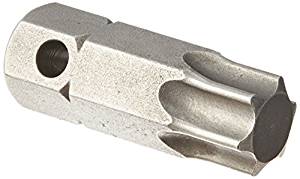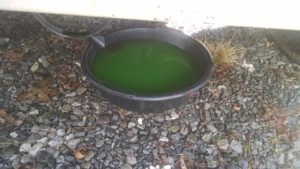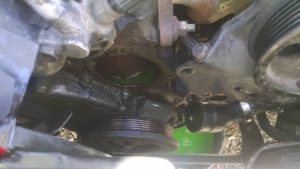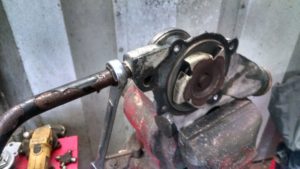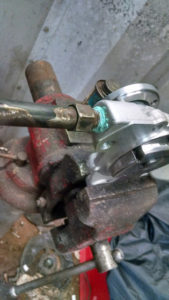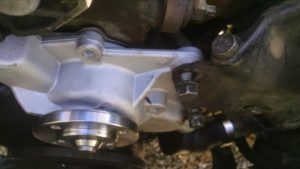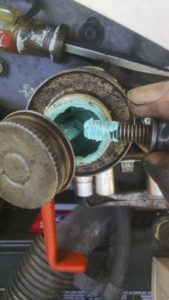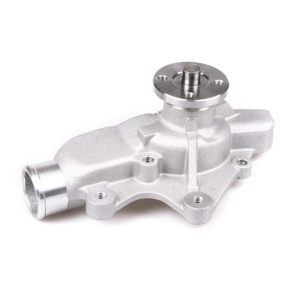How to Change the track bar on a Jeep Cherokee
The track bar locates the front axle side to side on a Jeep Cherokee. The stock bar consists of a rubber bushing at the axle end and a tie rod end at the frame joint. The frame end joint generally wears out first.
To determine if the track bar is bad, hold your hand on the frame end joint while an assistant turns the steering wheel back and forth. Any movement here means the bar is bad.
To replace the bar begin with the vehicle weight still on the axle. Locate the steering so that the 15mm head bolt that fastens the track bar to the axle is accessible. Remove the bolt. There is a special nut with a tab on it behind the axle. Pull it out after the bolt is free.
Now lift the vehicle to a comfortable working height. Remove the cotter key from the mounting bolt. Use a ¾ inch box end wrench to loosen the nut. Do not remove it completely at this time. Run it up even with the top of the bolt.
Use a tie rod end removal tool to press the tapered link out of the frame mount. My favorite is the pesto ( Since that tool is no longer available try this one from Amazon) that accesses the joint from the side. Hammer the puller between the bar and the mount. This will likely damage the rubber boot. Put a moderate amount of pressure on the puller by tightening the bolt on the puller. tie rod puller from JC Whitney
Then use a hammer to hit the frame bracket. Hit it hard. The idea is to temporarily deform the tapered hole enough to loosen its grip on the pin. When the bar pops loose, the puller will likely fall so watch your toes.
Remove the nut the rest of the way and remove the bar. Clean the tapered hole.
On the new bar, note the location of the cotter pin hole. Be sure it is rotated in a way that will allow you to put in a new pin once it is installed in the cavity.
Slip the tapered pin into the hole. Tighten the nut. Align one of the castle nut opening s with the hole in the pin. Insert a new cotter key and bend it back over the top of the pin.
Lower the Jeep to put weight back on the axle. Fit the axle end of the bar in the bracket and align the hole. The easiest way to align the hole is to have an assistant turn the steering wheel while you line up the bolt with the hole. Alternately you can push or pull the Jeep side to side to line up the holes.
Slip the bolt in and hold the special nut up behind it and carefully start the threads. Run the bolt in but do not tighten it fully. Bounce the Jeep a few times to settle the bushing in place. Then tighten the bolt.
Grease the frame end joint if it is fitted with a grease fitting.




